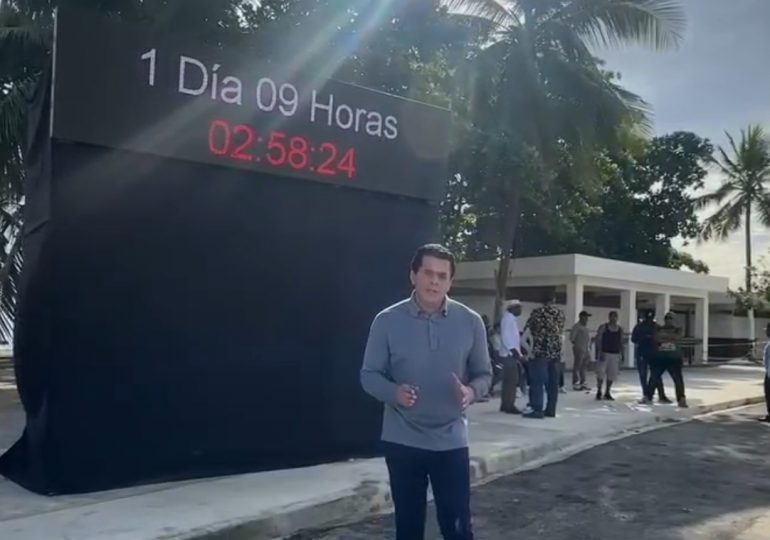Dominican Republic to launch first satellite to tackle Sargassum from space

Santo Domingo.- In a groundbreaking move, the Dominican Republic will launch its first-ever satellite, aimed at tackling the recurring sargassum seaweed crisis that devastates the country’s pristine beaches, said Joaquín Taveras Pérez, first secretary of the Dominican embassy in Rome.
According to Taveras Pérez, who was interviewed by journalist Onorio Montás for the “Revista Dominical Dejando Huellas”, which airs on Quisqueya FM, this technological marvel, conceived by four Dominican graduates of the Instituto Tecnológico de Santo Domingo (INTEC) and meticulously constructed in collaboration with Italy’s Sapienza University, marks a turning point in the Caribbean nation’s fight against this persistent environmental challenge.
No longer will local authorities be left scrambling to react to sargassum’s unpredictable arrivals. This pioneering satellite, equipped with cutting-edge technology, will act as a vigilant sentinel, mapping ocean currents and sargassum concentrations with pinpoint accuracy.
It will provide invaluable data on the invasive algae’s movements, allowing officials to anticipate its approach and take proactive measures. Imagine detailed maps, updated in real-time, predicting sargassum’s trajectory with unprecedented precision. This, the dream of Dominican scientists and environmentalists, is now becoming a reality.
With this information at their fingertips, authorities can deploy targeted mitigation strategies, from erecting sea barriers to mobilizing early cleaning efforts, saving crucial time and resources in the fight against this environmental scourge.
The Dominican satellite’s impact is not confined to the country’s coastline. Its contributions extend across the Caribbean and Central America, where other nations grapple with the same sargassum menace. By sharing data and fostering collaboration, this ingenious solution has the potential to empower the entire region in its struggle for cleaner beaches and healthier marine ecosystems.
This launch marks a new dawn in the Dominican Republic’s pursuit of environmental sustainability. It is a testament to the dedication of its people, proving that even small Caribbean nations can develop cutting-edge solutions to global challenges.
With its eyes now fixed on the heavens, the Dominican Republic is boldly charting a course towards a future where paradise beaches are no longer hostage to the whims of sargassum, but remain havens for tourism, recreation, and a thriving marine ecosystem.
Strong bilateral ties
The Dominican Republic and Italy are strengthening their cultural and academic ties through a variety of initiatives, Taveras Pérez, emphazised and cited several examples of this growing cooperation, including student exchange programs:
Dominican and Italian students are increasingly studying in each other’s countries, thanks to agreements between the two governments; cultural events: Dominican music, art, and cuisine are becoming increasingly popular in Italy, and Italian cultural institutions are hosting more events and exhibitions to showcase Dominican culture; and scientific research: Dominican and Italian scientists are collaborating on a variety of research projects, including climate change, oceanography, and renewable energy.

Joaquín Taveras Pérez, first secretary of the Dominican embassy in Rome. (External source)
In the interview, Taveras Pérez highlighted the growing presence of Dominicans in Italy, particularly in the fields of design and engineering. He noted that five Dominican students recently graduated from the University of Sannio in southern Italy with top honors in engineering.
The first secretary of the Dominican embassy also praised the work of the Italo-Latin American Institute, a Rome-based organization that promotes cultural and economic cooperation between Italy and Latin America. He said that the institute has played a key role in facilitating the exchange of students, scholars, and artists between the two countries.
The strengthening of cultural and academic ties between the Dominican Republic and Italy is a positive development for both countries. It is a sign of the growing friendship and cooperation between the two nations, and it is likely to lead to further collaboration in the years to come.

